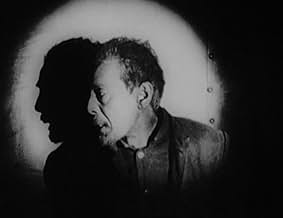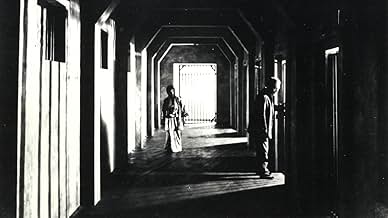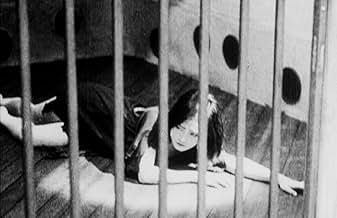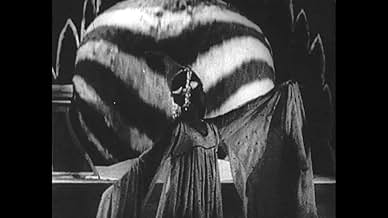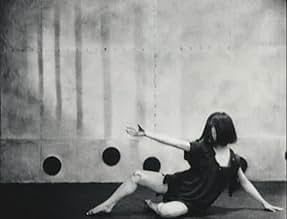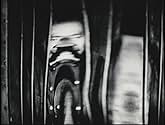IMDb रेटिंग
7.3/10
5.1 हज़ार
आपकी रेटिंग
अपनी भाषा में प्लॉट जोड़ेंA man takes a job at an asylum with hopes of freeing his imprisoned wife.A man takes a job at an asylum with hopes of freeing his imprisoned wife.A man takes a job at an asylum with hopes of freeing his imprisoned wife.
फ़ीचर्ड समीक्षाएं
10mjneu59
Film history has been negligent in recognizing this landmark silent drama, made in 1926 by pioneering Japanese director Teinosuke Kinugasa, but unknown until 1971, when a surviving print was (literally) unearthed in the director's garden shed. The film was produced in an isolated creative environment far removed from any foreign influence, but is nevertheless a masterpiece of imagery and editing, revealing a stunning visual flair and employing montage techniques as skillfully as anyone since Eisenstein. It tells a powerful, hallucinatory story of a janitor in an insane asylum who wants desperately to help his inmate wife after she attempts suicide, and like Murnau's 'The Last Laugh' unfolds without the crutch of intertitles. The film has aged remarkable little after the better part of a century in limbo, but since its belated rediscovery has yet to earn the acclaim and evaluation it deserves.
Kurutta ippêji (1926)
*** (out of 4)
Bizarre Japanese horror film has a man taking a janitor job at an asylum so that he can be closer to his wife who was committed after trying to kill their child. Had Luis Bunuel been bore in Japan and started making movies in 1926 then I'm guessing the final product would have came out looking like this thing. Lost for decades, it's easy to see why this film was never discovered but now that it's making its way around, it seems like this is destined to become something of a cult favorite to silent and horror fans. There's no straight story being told here, instead it's more avant-garde as we get all sorts of surreal images. We get the basic story but everything else is either told in flashback or through extra fast editing that helps build up the insanity of the lead character. Director Teinosuke Kinugasa really wants to get inside the mind of the insane and I think he does a pretty good job with it. At just 59-minutes the film moves at a pretty fast rate and a lot of this can be credited to the editing. I thought that the editing was the real star of the movie as it's done in such a fashion that you often see something but then you question what it was that you actually saw. You also have to try and keep up with what's going on and everything is happening so fast that you can see that the director was trying to use this to make the viewer feel what the characters were feeling being the asylum walls. There aren't any intertitles, which just adds to the visual image and the music score (done in the 70s) fits the film very well.
*** (out of 4)
Bizarre Japanese horror film has a man taking a janitor job at an asylum so that he can be closer to his wife who was committed after trying to kill their child. Had Luis Bunuel been bore in Japan and started making movies in 1926 then I'm guessing the final product would have came out looking like this thing. Lost for decades, it's easy to see why this film was never discovered but now that it's making its way around, it seems like this is destined to become something of a cult favorite to silent and horror fans. There's no straight story being told here, instead it's more avant-garde as we get all sorts of surreal images. We get the basic story but everything else is either told in flashback or through extra fast editing that helps build up the insanity of the lead character. Director Teinosuke Kinugasa really wants to get inside the mind of the insane and I think he does a pretty good job with it. At just 59-minutes the film moves at a pretty fast rate and a lot of this can be credited to the editing. I thought that the editing was the real star of the movie as it's done in such a fashion that you often see something but then you question what it was that you actually saw. You also have to try and keep up with what's going on and everything is happening so fast that you can see that the director was trying to use this to make the viewer feel what the characters were feeling being the asylum walls. There aren't any intertitles, which just adds to the visual image and the music score (done in the 70s) fits the film very well.
10quinolas
An old man works as a janitor in a mental hospital to be close to his wife who is a patient there and to try to get her out.
This is surely one of the most forgotten masterpieces of the silent era and an oddity in the history of Japanese cinema. Long thought lost, a print was found in the 70s and a music soundtrack added to it, which fits perfectly with the images. It might have been influenced by cabinet of doctor Caligary (director Kinugasa claimed he never saw the German film). However it surpasses it in style and in its more convincing (and chilly) portray of the inner mental state of the inmates in the asylum. To achieve this, the film makes use of every single film technique available at the time: multiple exposures and out of focus subjective point of view, tilted camera angles, fast and slow motion, expressionist lighting and superimpositions among others. It is also a very complicated film to follow, as it has not got intertitles.
The film opens with a montage of shots of rain hitting the windows of the hospital, wind shaking trees and of thunder. The unsettling weather metaphors the mental condition of the patients and introduces one of the them: a former dancer. The combination of sounds produced by rain, wind and thunder serves as the music that incites the dancer to get into a frantic, almost hypnotic dance. In another sequence involving the same patient engaged in another frenzied dance, she is being watched by other inmates. Multiple exposures of the dancer represent the patients' point of view and their confused "view" of the world.
These are just two examples from this amazing film trying to represent the patients' subconscious and view of the "sane" world.
In three words A MUST SEE.
This is surely one of the most forgotten masterpieces of the silent era and an oddity in the history of Japanese cinema. Long thought lost, a print was found in the 70s and a music soundtrack added to it, which fits perfectly with the images. It might have been influenced by cabinet of doctor Caligary (director Kinugasa claimed he never saw the German film). However it surpasses it in style and in its more convincing (and chilly) portray of the inner mental state of the inmates in the asylum. To achieve this, the film makes use of every single film technique available at the time: multiple exposures and out of focus subjective point of view, tilted camera angles, fast and slow motion, expressionist lighting and superimpositions among others. It is also a very complicated film to follow, as it has not got intertitles.
The film opens with a montage of shots of rain hitting the windows of the hospital, wind shaking trees and of thunder. The unsettling weather metaphors the mental condition of the patients and introduces one of the them: a former dancer. The combination of sounds produced by rain, wind and thunder serves as the music that incites the dancer to get into a frantic, almost hypnotic dance. In another sequence involving the same patient engaged in another frenzied dance, she is being watched by other inmates. Multiple exposures of the dancer represent the patients' point of view and their confused "view" of the world.
These are just two examples from this amazing film trying to represent the patients' subconscious and view of the "sane" world.
In three words A MUST SEE.
I saw the 1 hour version shown on TCM. I'll like to see the 78 minute restoration as this version has no inter titles, no translation of signs and missing a third of the film. Now, back then a benshi would live narrate so there wouldn't be titles but do they have a copy of what the benshi said during the film (if anything)? I would read a synopsis before watching as it makes things clearer. The plot is hard to follow, some of it is from the POV of crazy people or the dream of the protagonist. Well worth watching but more for admiration than enjoyment.
If you do not think you can take graphic scenes of mentally unstable people, this film is not for you.This story is about a man who takes a job at a local mental institution so he can be near his wife, who has gone mad. Throughout this long thought lost film you see clearly harrowing images of people at the institution. The soundtrack only adds to the foreboding. There are people lying catatonic and there is a dancer who doesn't stop dancing until she drops to the floor, exhausted. The film is 59 minutes long, I think it was originally longer but this was all that was found. There are no inter titles, its a silent film. In Japan, I am certain the benshi narrated the story in theaters, but your imagination has to follow this story. So, why a 7? It is daring, unflinching, brave and both ugly and not at the same time. As a point of reference only, Guy Maddin's work approaches this. Just know going in there is no happiness here. You won't soon forget this film. Best idea: Don't watch it before bedtime, it will stay with you.
क्या आपको पता है
- ट्रिवियाThis film was deemed lost for more than forty years, but it was rediscovered by its director, Teinosuke Kinugasa, in a rice cans in 1971.
- इसके अलावा अन्य वर्जनReissued in Japan in 1973 with musical score replacing original benshi.
- कनेक्शनFeatured in The Story of Film: An Odyssey: The Golden Age of World Cinema (2011)
टॉप पसंद
रेटिंग देने के लिए साइन-इन करें और वैयक्तिकृत सुझावों के लिए वॉचलिस्ट करें
- How long is A Page of Madness?Alexa द्वारा संचालित
विवरण
बॉक्स ऑफ़िस
- बजट
- JP¥20,000(अनुमानित)
- चलने की अवधि
- 1 घं 10 मि(70 min)
- रंग
- ध्वनि मिश्रण
- पक्ष अनुपात
- 1.33 : 1
इस पेज में योगदान दें
किसी बदलाव का सुझाव दें या अनुपलब्ध कॉन्टेंट जोड़ें

